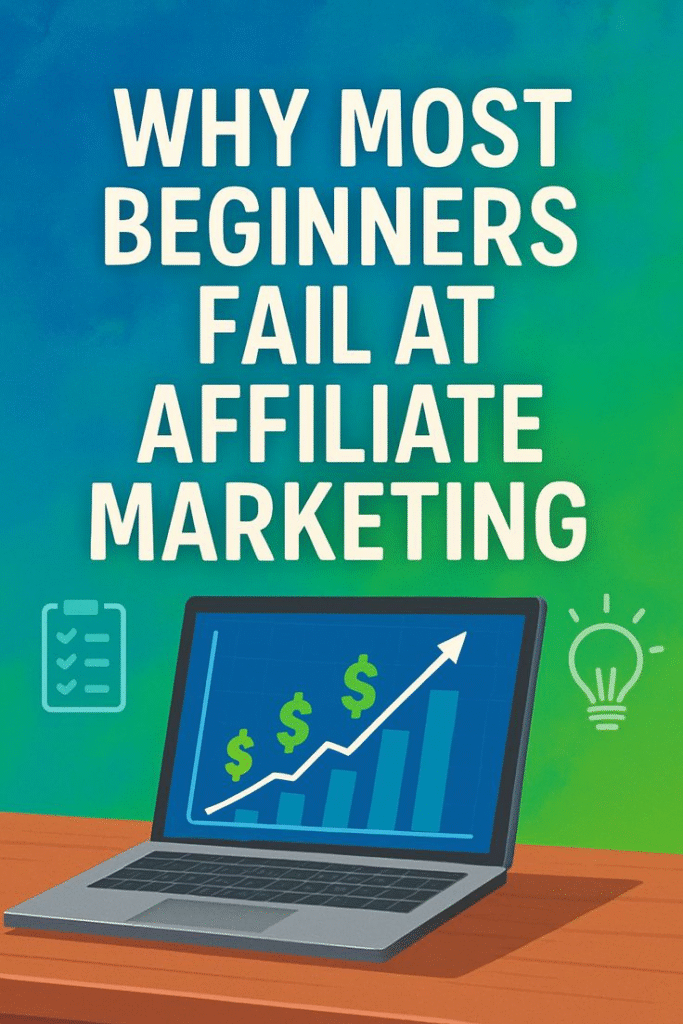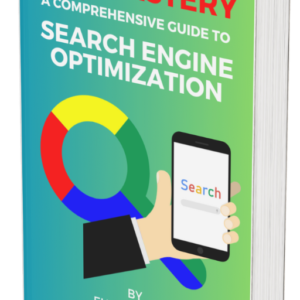Affiliate marketing is one of the most accessible ways to grow revenue online, but it comes with its own challenges—especially for beginners.
Many new marketers step into the field believing that signing up for a network and placing a few links will be enough to generate consistent income.
The reality is different. Without the right strategy, small errors quickly compound into lost sales, wasted budgets, and frustrated partners.
#1. Launching Without a Clear Offer and Audience

Beginners often rush to sign up for a network and recruit partners before they’ve defined what they sell, who it’s for, and why it beats alternatives.
That’s one of the foundational affiliate marketing mistakes because affiliates amplify what already exists; they don’t fix weak positioning.
Start by documenting a customer problem statement, the outcome your product delivers, a short proof stack (reviews, case results, or third-party mentions), and a simple incentive (discount, bonus, or guarantee).
Then map the top three audience segments and list the creators or publishers they already trust.
To validate the offer, run a small controlled test with two or three affiliates who reach distinct segments.
Provide each with a custom landing page that repeats the same core promise and uses social proof from that segment.
If you see below-benchmark click-to-purchase rates, improve the offer and page clarity before scaling.
Most programs that struggle later skipped this work up front and compensated by adding more partners—only to multiply underperformance.
Set a 90-day “proof of offer” goal with weekly reviews of clicks, add-to-carts, bounce rate, and actual orders attributed to affiliate links or codes.
If the value prop is unclear, pay structure and tracking tweaks won’t save it. This single discipline prevents a long tail of affiliate marketing mistakes that follow from weak fundamentals.
#2. Expecting Unrealistic Conversion Rates
Another frequent misstep is projecting high purchase rates from day one.
Public benchmarks suggest affiliate link conversions often fall in the ~0.5–3% range depending on vertical, traffic quality, and intent.
New programs that assume 5–8% end up overpaying for traffic, misjudging inventory needs, and panicking when reality lands closer to 1–2%.
Avoid that by modeling three scenarios (base, best, worst) and tying spend caps to actuals each week.
For ecommerce, compare against broader retail conversion references so you can tell whether the problem is traffic quality or landing-page friction.
Use this checklist when rates disappoint: Does the landing page clearly restate the exact promise the affiliate made? Is there friction at checkout (account creation walls, slow page speed, unexpected fees)?
Do you showcase real customer proof above the fold? Do mobile users—often the majority of referrals—get a clean layout and fast load?
Calibrate expectations early, and your partners will trust your projections. Over-promising is one of those avoidable affiliate marketing mistakes that damage credibility with both finance and affiliates.
#3. Treating Tracking and Attribution as an Afterthought
Tracking is where many affiliate marketing mistakes pile up. If codes, UTMs, and post-purchase surveys aren’t set before launch, you’ll lose orders to “direct” or other channels and underpay partners.
Standardize these basics: unique coupon codes per affiliate, UTM parameters on every link (with campaign, source, medium, and content), and a brief “How did you hear about us?” field at checkout to backstop attribution.
For multi-touch journeys, adopt a simple rule you can explain (e.g., last non-direct click with 7-day lookback) and document it in your partner policy so there are no surprises.
Privacy changes also affect tracking. Chrome’s third-party cookie timeline has shifted repeatedly; some official documentation and reporting in 2024–25 reflected “early 2025” plans, while subsequent updates indicated Google would maintain third-party cookie options and pivot to a user-choice model.
The practical takeaway for beginners: don’t rely solely on third-party cookies.
Use first-party tagging, server-side tracking where feasible, and platform integrations (e.g., commerce platforms plus analytics).
That makes your program resilient regardless of browser changes and reduces a whole class of affiliate marketing mistakes tied to missing data.
#4. Ignoring FTC Disclosure Rules
Affiliates need to disclose material connections clearly and conspicuously. Brands must guide and monitor those disclosures.
New managers often assume the platform’s built-in labels are enough or that “everyone knows” links are monetized.
That assumption leads to compliance gaps—arguably among the most serious affiliate marketing mistakes because violations can trigger legal exposure and reputational damage.
Your operating standard should be explicit: each post with an affiliate link includes a plain-language disclosure near the link (e.g., “I may earn a commission from links on this page”) and any platform-specific tags.
Share a one-page guide with examples for blogs, YouTube descriptions, short-form video captions, and stories.
Require that affiliates leave disclosures visible on repurposed content as well. Brands should monitor content periodically and correct issues in writing.
The FTC’s updated guidance emphasizes clear disclosures, brand oversight, and proper treatment of reviews; new programs that adopt those practices early avoid expensive cleanup later.
Treat disclosure quality as part of creative QA—because it is—and you’ll sidestep an unnecessary set of affiliate marketing mistakes.

#5. Using One-Size-Fits-All Commission Structures
Flat rates across all partners and products create inefficient spend. High-margin products can support higher rates; low-margin SKUs require tiered or capped models.
Top-of-funnel publishers may need a hybrid (small CPC + lower CPA) to cover editorial effort, while review sites or deal forums can work purely on CPA.
Beginners often stick to a single default (e.g., 10% CPA) and wonder why premium publishers won’t participate and why discount-driven channels dominate.
Design a simple matrix: margin bands (low/medium/high) by partner type (content, review/comparison, coupon/deal, creator).
Set baseline CPA along that grid and publish it in your program terms. Add performance tiers—e.g., hit 20 confirmed orders in a month and earn +2% for the next month.
For subscription products, test a fixed bounty (first purchase) vs. percentage of first-month billings; later, consider limited-time “accelerators” around seasonal peaks.
If you calibrate pay to value delivered, partner mix will balance naturally. Failing to do so is among the most common affiliate marketing mistakes that choke growth while wasting budget.
#6. Recruiting on Volume Instead of Fit
A long roster looks impressive, but inactive or misaligned partners crowd communication channels and dilute focus.
Many early programs equate volume with reach and overlook whether a partner’s audience actually overlaps with the buyer.
That’s one of the subtle affiliate marketing mistakes that surfaces months later in the form of low-quality clicks and poor conversion.
Build a short list using audience clues: topics they rank for, the products they already recommend, comment sentiment on relevant posts, and evidence of purchase-driving content (comparisons, tutorials, testimonials).
Start with a curated 20–40 partners and give them a proper toolkit: brand one-pager, sample angles, image pack, product data sheet, and deep links to the most relevant pages.
Review performance weekly for the first month and share quick insights (“this headline beat the alternative by 18% CTR”) so they can iterate.
As wins emerge, expand to look-alike partners. This approach prioritizes fit over volume, avoids the churn of constant cold outreach, and prevents affiliate marketing mistakes like wasting time managing dozens of dormant accounts.
#7. Shipping Weak Creatives and Expecting Affiliates to Fix Them
Good partners can’t compensate for missing or low-quality creative assets. If you only supply a generic logo and a homepage link, expect underwhelming results.
Another of the recurring affiliate marketing mistakes is treating creative like an afterthought instead of a conversion lever.
Provide hook-specific images (before/after, comparison, feature close-ups), short benefit bullets, and a few tested headlines matched to common content formats: “X vs Y,” “Best for [use case],” and “Step-by-step setup.”
Include alt text and file names that reflect the product and use case. Bundle pre-built deep links for your highest-converting pages and seasonal offers.
Offer optional pre-written snippets for intros, disclaimers, and CTA lines that affiliates can edit to their voice.
Rotate creatives monthly to address fatigue and new objections collected from customer support and reviews.
When brands supply a proper kit, affiliates create more persuasive content and need fewer revisions.
That single change eliminates a surprising number of affiliate marketing mistakes tied to inconsistent messaging and off-brand claims.
#8. Measuring Only Clicks and Ignoring Quality
Click spikes feel good, but quality shows up in add-to-carts, checkout starts, and orders—plus refund rates and customer lifetime value.
Programs that optimize for clicks alone tend to over-index on channels that game CTRs at the expense of buyers.
That’s one of the costliest affiliate marketing mistakes, because it misallocates budget for months.
Build dashboards that segment performance by partner, device, and landing page, and include both efficiency (CPA/ROAS) and retention (repeat purchase rate within 60–90 days, refund percentage).
Use negative controls too: if a partner drives a high percentage of orders that cancel or refund, cap commissions on those SKUs or adjust the approval time window before payouts.
Where possible, connect orders to your CRM so you can compare cohorts over time.
Industry snapshots show mobile holds a large share of affiliate referral traffic; if your mobile checkout is sluggish, you’ll see abandoned carts and conclude a partner is low quality when the real culprit is friction.
Guarding against that misdiagnosis prevents cascading affiliate marketing mistakes in optimization.
#9. Skipping Program Hygiene
A beginner pitfall is launching with minimal terms and broad auto-approval. That invites code scraping, trademark bidding, and brand-unsafe placements.
Tighten the basics: require manual approval for new publishers, prohibit paid search on brand and branded terms unless explicitly allowed, specify coupon policy (no stacking, authorized partners only), and define acceptable traffic sources.
Enforce a standard order validation window before payouts to catch fraud and returns.
Set cadence for clean-ups: quarterly audits of coupon leakage, de-duplication between affiliates and paid search, and “last-click sniping” (where a coupon site captures credit at checkout after other partners did the education).
Publish an escalation path for violations—warning, temporary pause, then removal—to protect good partners and keep your brand consistent.
Many long-running affiliate marketing mistakes trace back to this missing hygiene; once you implement it, quality and partner trust improve quickly.
#10. Under-Communicating and Over-Automating
Tools help, but relationships drive results. Programs that rely entirely on automated newsletters and generic updates see participation decay.
Don’t let that be the last of your affiliate marketing mistakes. Segment your roster and communicate accordingly: monthly performance notes for all, personalized ideas for your top 20%, and quarterly planning calls with your top 10 partners.
Share what’s converting across channels (e.g., the product page or bundle that’s currently winning) and give partners a heads-up on launches and seasonal offers with early access to assets.
Create a simple feedback loop: a shared form or email alias where partners can request assets, report broken links, or ask for custom codes. Respond within two business days.

Small operational courtesies—on-time payouts, clear approvals, quick fixes—compound into loyalty.
The outcome isn’t just more content; it’s better content, published closer to key dates, with consistent disclosures and more accurate tracking.
Most “stuck” programs aren’t broken; they’re quiet. More deliberate partner care prevents a cascade of affiliate marketing mistakes across creative, compliance, and performance.
A Practical First-90-Days Plan
Week 1–2: Define offer and audience; create messaging, proof stack, and landing pages. Set up tracking (UTMs, codes), analytics goals, and an attribution rule you can explain.
Draft program terms covering disclosure, paid search, coupons, and traffic sources, and prepare a one-page disclosure guide referencing FTC expectations.
This upfront work alone neutralizes several affiliate marketing mistakes before they begin.
Week 3–4: Recruit 20–40 best-fit partners. Share a starter kit with deep links, images, headlines, and approved claims.
Set conservative conversion assumptions—e.g., 1–3% for purchase-focused campaigns—and cap budgets accordingly.
Publish base, best, and worst-case models and commit to weekly reviews.
This prevents the budgeting and forecasting affiliate marketing mistakes that sink early momentum.
Week 5–8: Launch with weekly check-ins. Track clicks, add-to-carts, checkout starts, validated orders, and refunds by partner and device.
Diagnose friction on mobile quickly given its share of affiliate traffic. Adjust commission tiers by partner type and margin band.
Enforce coupon rules and audit trademark bidding. These operational cycles eliminate quality and leakage affiliate marketing mistakes before they scale.
Week 9–12: Expand to look-alike partners, rotate creatives to fight fatigue, and introduce limited-time accelerators.
If browser changes affect tracking, lean on first-party data capture and server-side integrations; keep partners briefed on what’s changing and how you’re adapting.
Close the quarter by sharing a transparent results recap and a roadmap for Q2. This steady cadence replaces guesswork with process and keeps compliance and attribution affiliate marketing mistakes from reappearing.
Conclusion
Success in 2025 doesn’t require a complex tech stack or a massive roster.
It requires clarity of offer, realistic conversion targets, clean tracking, consistent disclosures, and respectful partner management.
Avoid the ten affiliate marketing mistakes above, and your program will compound: better fit partners, better content, better data, and better margins.
Keep the plan simple, write down your rules, and review performance every week. Most problems in affiliate are predictable—and, as you’ve seen, preventable with a disciplined playbook.










